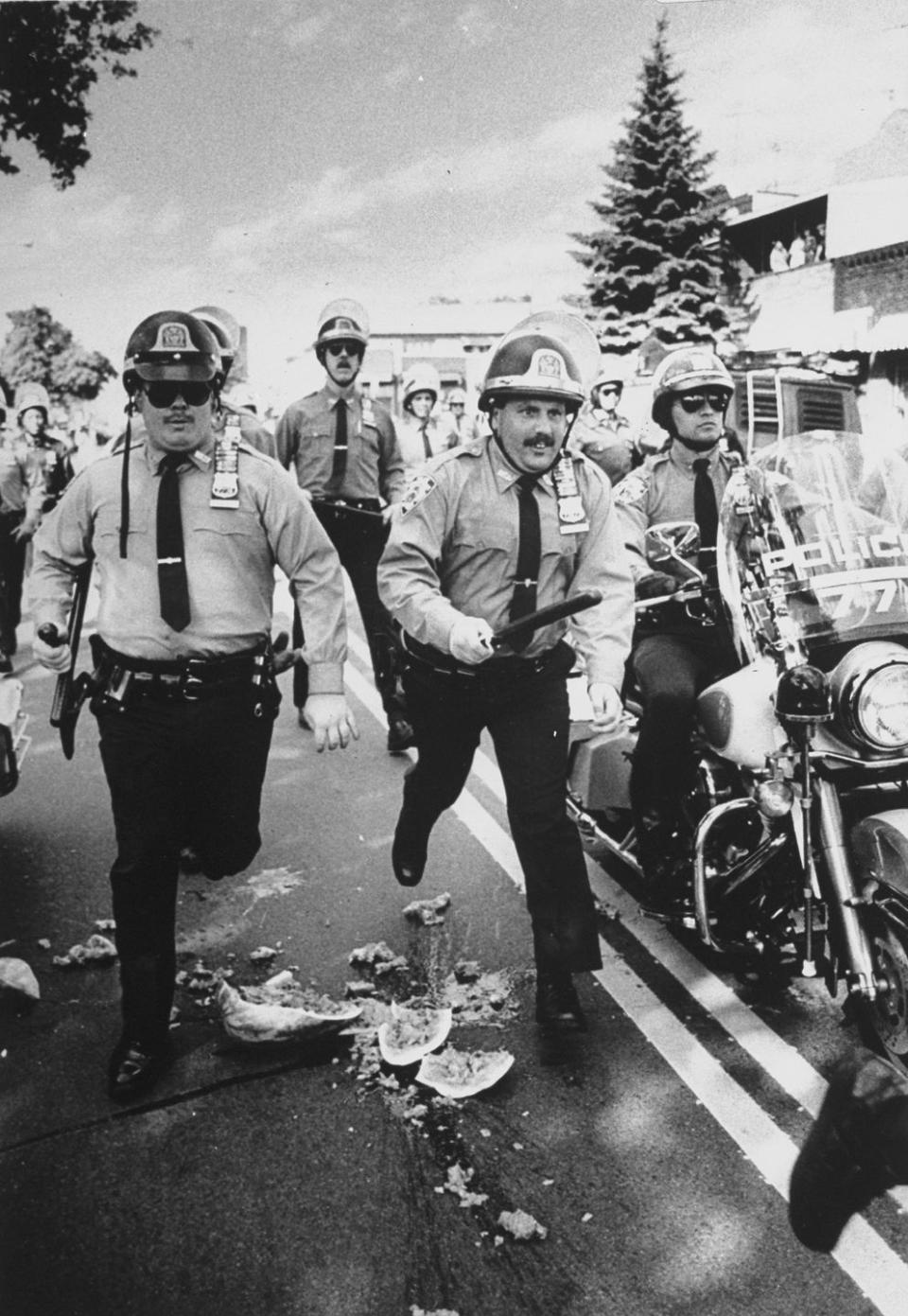31 Years Ago a Black Teenager Was Killed in Brooklyn. Donald Trump's Rhetoric Fueled the Hatred.

Two bullets killed 16-year-old Yusuf Hawkins, but for some reason I always thought he’d been murdered with a baseball bat. The bats were central to all the childhood warnings I received about some of Brooklyn’s white enclaves. A group of Black kids went to one such neighborhood to check out a used car in 1989, and within moments were surrounded by baseball bat-wielding whites. The bats, weighty with putrid Americana symbolism, were the stars of the story as I heard it. And while the Black teens were attacked by a slur-flinging mob armed with them, at least one of the white youths had a gun. Hawkins was shot in the chest.
“De facto segregation in New York City is part of the story,” says Muta’Ali Muhammad, the director of HBO’s new documentary Yusuf Hawkins: Storm Over Brooklyn. The film examines the 1989 lynching through archival footage, police recordings, and interviews with Hawkin’s family and friends, as well as members of the mob responsible for his death. It’s a portrait of the many ways in which the North remains unreconstructed—and the peculiar breed of New York racism that’s found the spotlight once again in Donald Trump’s presidency.
In August 1989, Hawkins and his friends left their Black neighborhood of East New York to check out a car for sale in the then-largely Italian-American community of Bensonhurst. There, a group of young white men were awaiting the rumored arrival of Black and Hispanic youths, who they believed would be attending a birthday party in their neighborhood. The birthday girl was said to be dating a Black boy, and the group was preparing to fight the boyfriend and his friends when they arrived. Instead, they spotted Hawkins’ entirely unrelated quartet of Black youths, and attacked.

Storm Over Brooklyn is at its most gripping and horrifying as it traces Hawkins’ final moments using a graphic that features dots representing the young men and the group that hunted them on the night of the murder, all superimposed over a map of Brooklyn. The geography of the city, and the seven miles separating East New York and Bensonhurst, are central to the story. The motif was influenced by a New York Times interactive article that mapped segregation in NYC. “That map inspired me from the beginning,” says Muhammad. New York’s racial divides are “the subtext, and that map just laid it all out.”
Also in the subtext of the story is the fact that 1980s New York was the place and time that birthed Donald Trump as a national figure. Months before Hawkins’ murder, the future president placed an ad in city papers calling for the execution of a group of boys who, under hours of coercive questioning by police, confessed to participating in a brutal sexual assault in Central Park. They quickly recanted, but the Black and Latino youths known as the Central Park Five became lightning rods for the city’s racist invective. Years later, the men were exonerated after the real perpetrator confessed.
“The things that he talks about line up with what he did in '89,” said Muhammad, citing Trump’s recent “Suburban Lifestyle Dream” tweet as an example of the president’s perspective: “One of separation, where, ‘We don't need these kinds of things near us.’ Similar to, ‘Build the wall.’ These walls exist to a large degree in New York. We still live in our own ethnic enclaves.”
Hawkins wasn’t the only Black New Yorker to fall victim to racist mob violence during the ‘80s. In 1982, Willie Turks, a Black transit worker, was dragged from a car and stomped to death by a group of white men. And after his car broke down in Howard Beach, Queens in 1986, Michael Griffith was chased onto a highway by white teenagers, and died after being hit by a different car. The group caught one of his companions, and beat him with a tire iron and baseball bat.
In the wake of Hawkins’ murder, the Rev. Al Sharpton organized a series of marches that brought hundreds of Black protestors to Bensonhurst. Storm Over Brooklyn includes harrowing footage from these demonstrations, which found white Brooklynites waving watermelons at the protestors and shouting racial slurs. At one march, Sharpton was stabbed in the chest by a counter-protester. One man, then-19-year-old Joseph Fama, was eventually convicted of murder in Hawkins's slaying; he remains in prison.

Spike Lee, whose film Do the Right Thing offered the defining portrait of late 1980s Brooklyn, was among the prominent New Yorkers who lent their voices to Hawkins’ cause. Muhammad includes a clip from the film featuring Ossie Davis’s character Da Mayor in his documentary. But it’s not just a bit of scene setting—Muhammad is the grandson of Davis and his wife and Do the Right Thing co-star, actress Ruby Dee. The late performers were groundbreaking African-Amerian actors and civil rights activists who served as emcees during the March on Washington.
Muhammad grew up steeped in his family’s activist tradition, but was still in for a surprise during the making of Storm Over Brooklyn. While viewing archival footage of the funeral of Eleanor Bumpurs, an elderly Black woman who was killed by police in 1984, he unexpectedly spotted his grandparents sitting in the front row. “To me, little stuff like that is a sign like, ‘Okay, you're doing the right thing.’” he says. “No pun intended.”
You Might Also Like

 Yahoo News
Yahoo News 